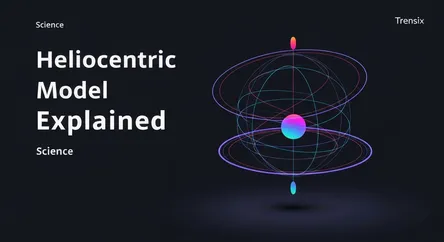Science
Heliocentric Model Explained

Discover the heliocentric model, the revolutionary concept that places the Sun, not Earth, at the center of the solar system. Learn its history.
What is it?
The heliocentric model is the astronomical framework in which the Earth and planets revolve around the Sun at the center of the Solar System. This model opposes geocentrism, which held that the Earth was the center. While the idea was proposed in ancient Greece, it was Nicolaus Copernicus in the 16th century who developed a comprehensive mathematical model that kickstarted the Copernican Revolution. His work demonstrated a more elegant and accurate system for predicting planetary positions, challenging centuries of established doctrine and paving the way for modern astronomy.
Why is it trending?
As a cornerstone of science, the heliocentric model consistently remains relevant in education and historical discussions. It often re-enters public discourse during anniversaries of key figures like Copernicus or Galileo, or when discussing the nature of scientific discovery itself. Furthermore, the ongoing discovery of thousands of exoplanets orbiting distant stars reinforces the model's fundamental principles on a galactic scale, making it a timeless topic. It serves as a classic example of how scientific evidence can overturn deeply entrenched beliefs.
How does it affect people?
The shift to a heliocentric view profoundly altered humanity's understanding of its place in the cosmos. It demoted Earth from a unique, central position, which had significant philosophical and theological implications. This paradigm shift was essential for the development of modern physics, enabling the work of Johannes Kepler, Galileo Galilei, and Isaac Newton on planetary motion and gravity. Today, this model underpins all space exploration, satellite communications, and our basic understanding of how star systems, including our own, function. It fundamentally shapes our cosmic perspective.